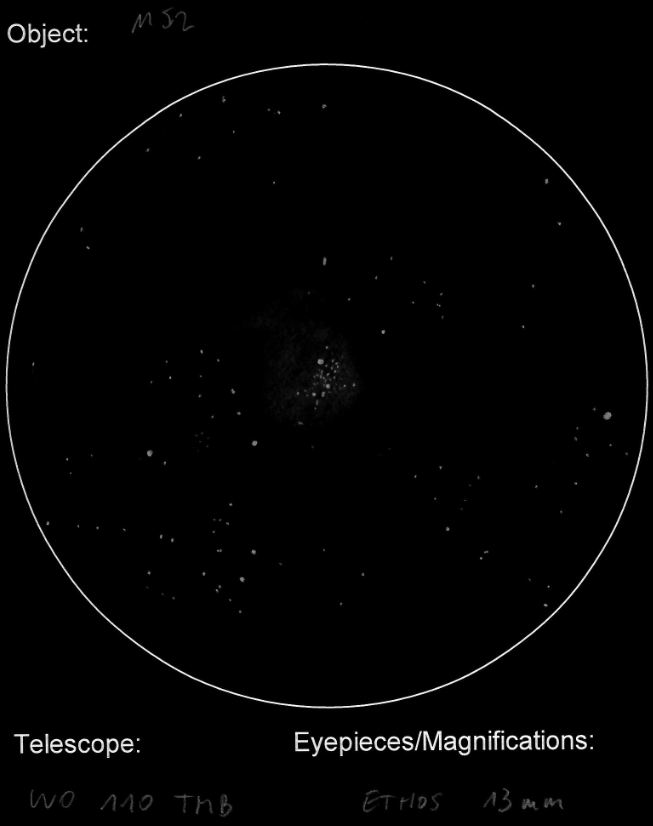
After having made a few moon crater sketches, I ‘m now sketching the first deep-sky objects.
M52: William Optics 110 TMB with TV Ethos 13mm
thanks
/Erik
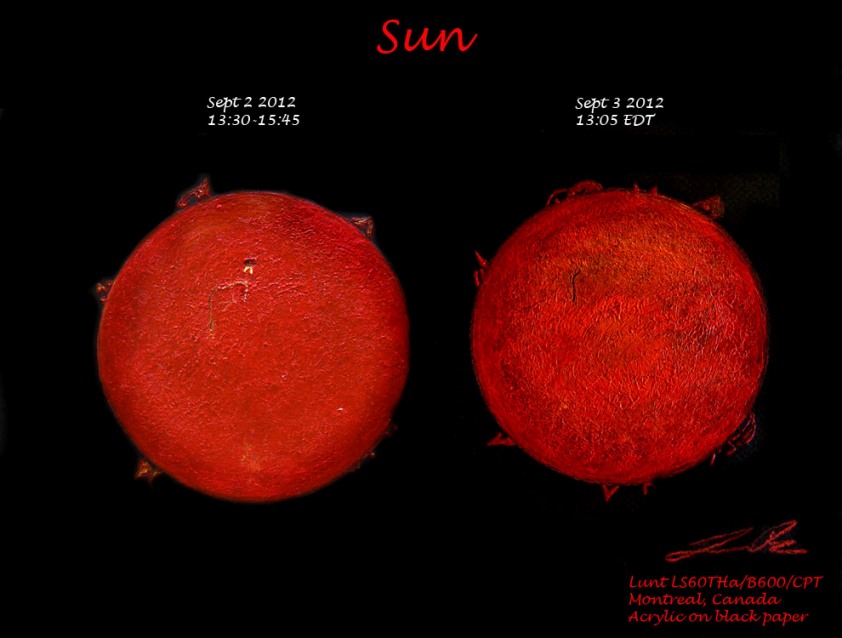
Object Name : Sun
Object Type : H alpha observation
Location : Montreal, Canada
Date : September 2 and 3
Media : Acrylic on black paper
Scope: Lunt LS60THa/B600|CPT on motorized EQ3 mount.
Our star put up a great show during 2 days. I was able to observe the «good hair day» of the sun for a total of nearly 5 hours. Many proeminences, which remained relatively stable throughout 48 hours, could be seen. The observation of September 2nd was interesting. I started the observation around 13:00 EDT keeping the magnification low (25-50X) to sketch the whole disk and the distribution of the proeminences. I kept an eye on AR 1560, which was facing earth. Around 14:00 EDT this region began to light up. Two bright flares (showed at the upper center lane of the first disk) were clearly visible and increased in brightness for the next 30 minutes. Then they faded away and by 15:00 EDT the phenomenon ended. I was glad to be able to capture this activity on my sketch.
The sketches were done on black Pastel Paper with HB pencil to record details of the proeminences. The disk was traced with a compass. Acrylic paint (red and yellow) was then used to reproduce the color seen in H alpha. The paint was layered with large and small brushes directly on the lines of the HB pencil. The two separate sketches were photographed and then assembled with Photoshop CS3. No color or contrast adjustment were done except for the background.
Jean Barbeau
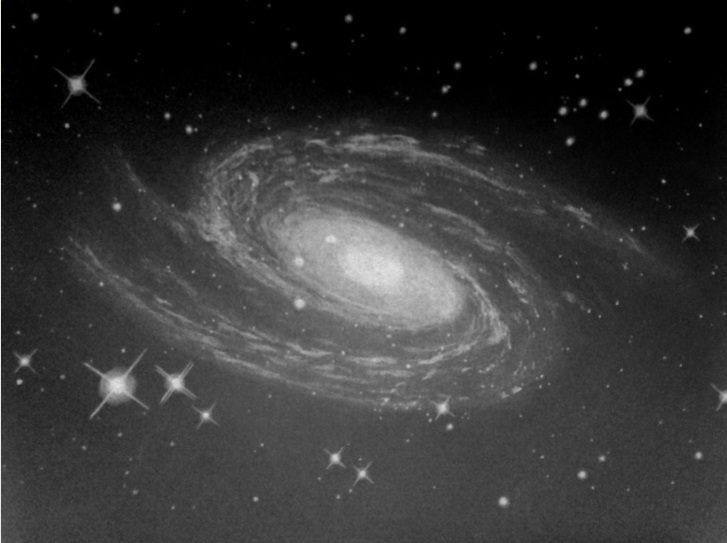
Object Name: M81
Object Type: Spiral galaxy located 12 million light years away in the constellation Ursa Major
Location: Home, based on a photograph of the galaxy
Date: September 4, 2012
Media: Graphite pencil on white paper
This is my first submission; I took my first astronomical sketching lesson one week earlier so I’m a beginner, but have a strong interest in keep developing the necessary skills. I’m also about to undertake my first introductory astronomy course this week.
Greetings from Costa Rica.
Mauricio Gamboa
Editor’s Note:
As a rule, the Astronomy Sketch of the Day focuses on sketches that are based on live observing sessions. However, from time to time, we do take the opportunity to feature sketches, paintings, illustrations and mixed media that are created under other circumstances.
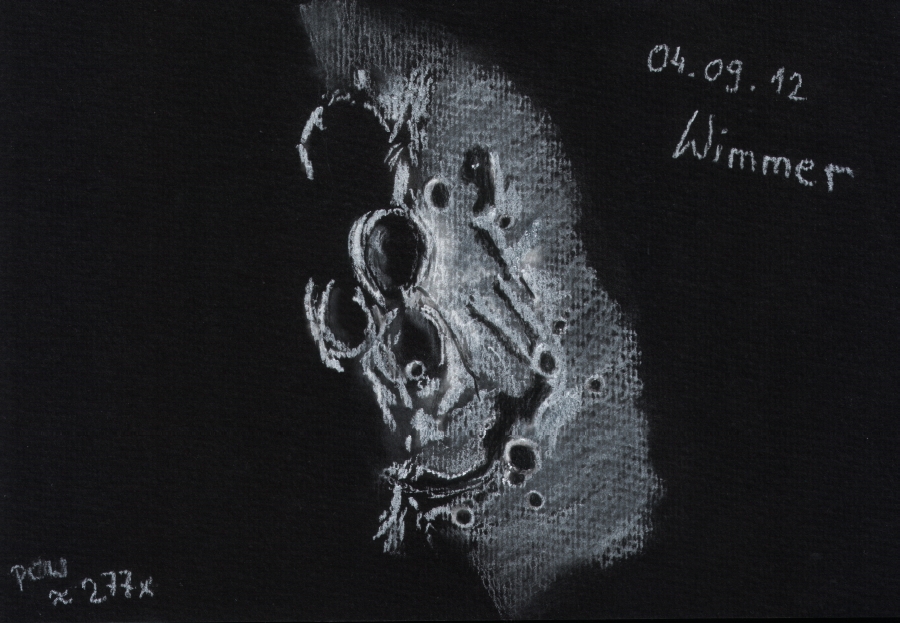
Weird family of Reichenbach.
I mean the craters Reichenbach 😉
Strange, intricate, rugged. They have a sharp hills beautiful shining at this stage of illumination.. And deep gorges.
At high magnification, we find there a long slit running on the slope of Reichenbach C.
SCT 5″. Magnification about 277x. White pastels. Shadows darkened with the soft pencil.
Aleksander Cieśla (Wimmer)
www.astro-art.com.pl
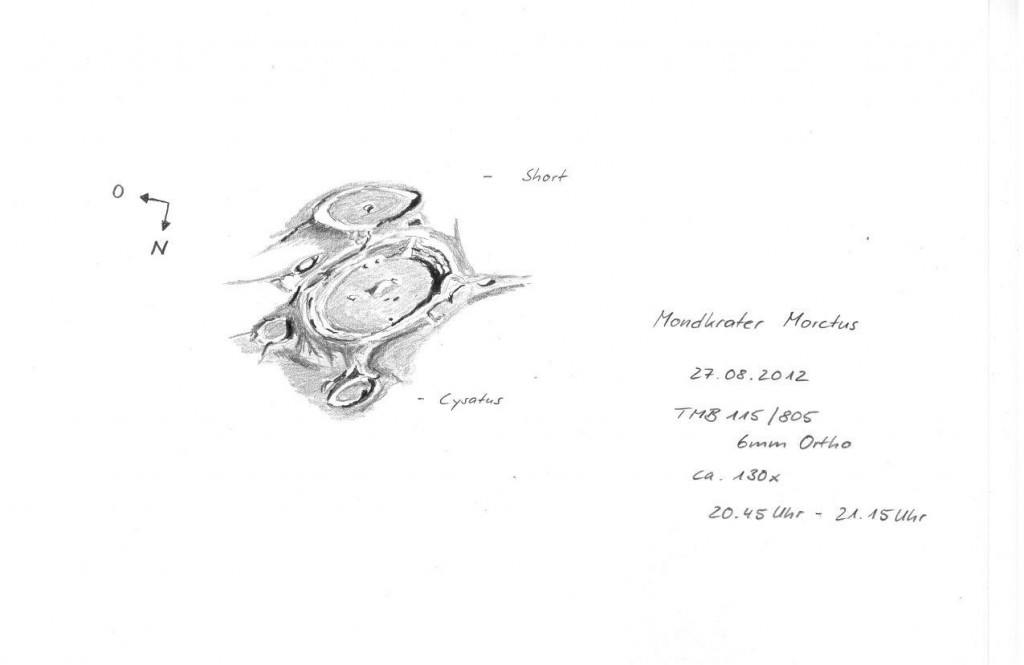
Hello,
this evening I drawed the crater Moretus and two of his neighbours: Short and Cysatus.
Moretus has a flat floor filled with lava and an imposante central mountain of 2700 m. In my eye fell immediately his stage crater wall.
Difficult course, was the perspective. Due to the southerly location of Moretus it was a real challenge.
I hope, that you like my sketch.
Greetings and clear sky
Uwe

When we sketch the sun, we sketch sunspots or H-alpha. But the most beautiful thing to sketch is a sunrise or sunset. During my 2 weeks holiday in France I observed every day the sky just after sunset. I missed only one day due to rain.
The sky and the trees were sketched with a set of 12 soft pastels. The farm was sketched with pastel pencils. The original drawings are all A4-format. I waited the sun to set behind the trees and started sketching as fast as I could. After 30 minutes I stopped because the sky changes very fast.
I had great difficulty in sketching the trees. The dark green pastel was to light, the black and brown to dark… The second week the result is much better than the first week.
Clear skies
Jef De Wit
Location: Ronnet, France (46°12’ N 2°42’ E)
Date and time: 4-16 august 2012 around 19.00 UT
Equipment: naked eye
Medium: soft pastel and pastel pencils on art paper (A4)
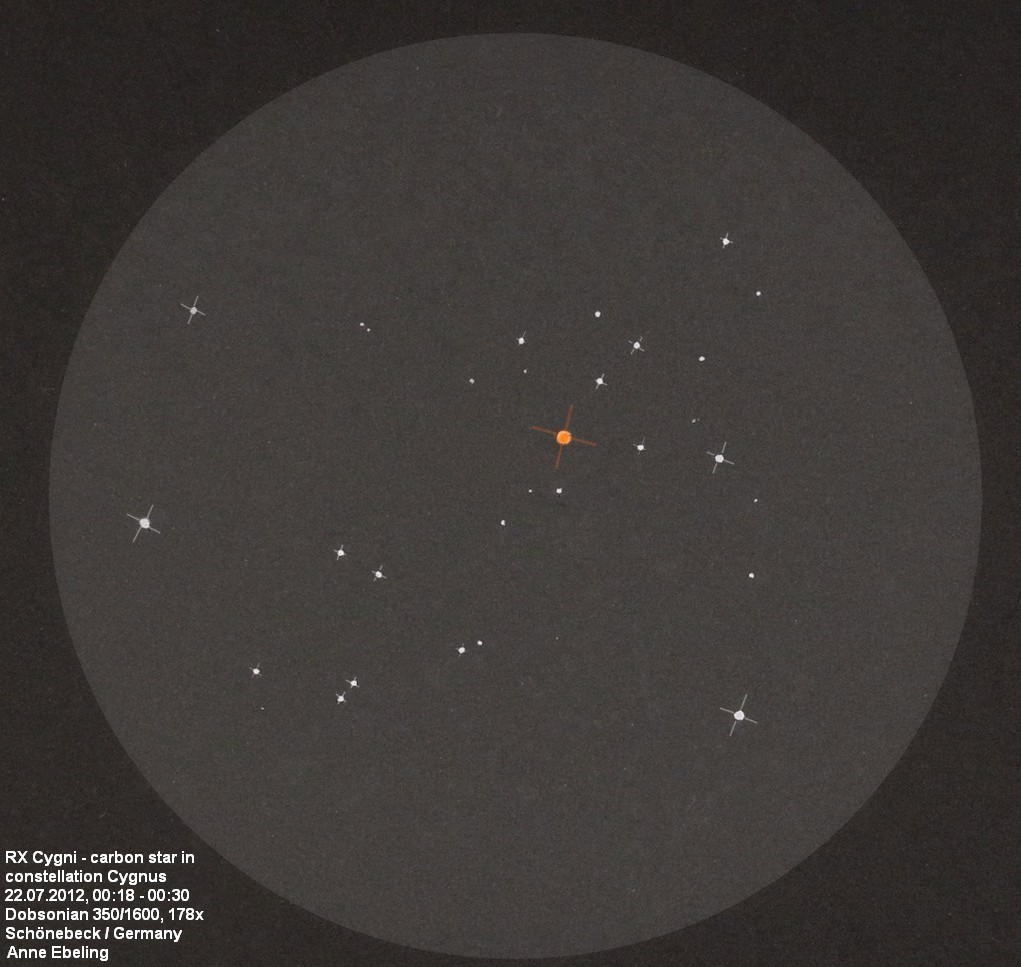
Hi!
I decided to submit a sketch of an extraordinary object: RX Cygni. It’s one of these very red shining carbon stars; nice to observe and unlike other deep-sky-aims, because you easily see colors, even in small telescopes. I suppose the most famous carbon star is R Leporis, which can be found in winter – much more intense than RX Cygni!
Information can be seen in the picture.
Greets – Anne
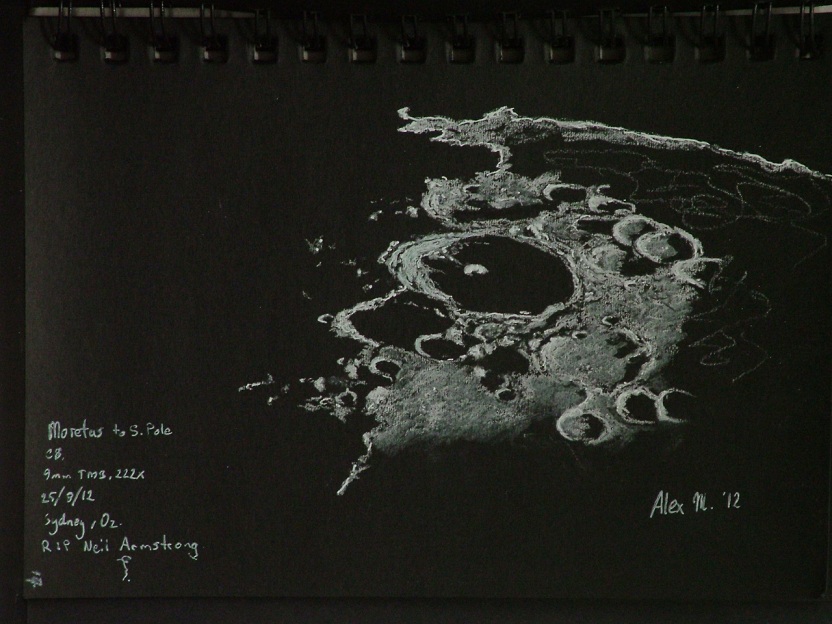
Hello all,
A sad time has befallen our hobby with the passing of Neil Armstrong. I never imagined as a little boy that I would be writing a tribute to him. And these words are not easy either.
Last Saturday night I managed a session with a good mate, both of us sketching the Moon. We never could have imagined what was happening on the other side of the world at the same time. What had been a very productive and happy time turned into a sorrowful one in a few short hours.
From my last sketch, I was determined to focus on the area around either one of the poles. Whatever took my fancy would become my subject. The spectacular crater Moretus caught my eye, and two hours later the sketch below appeared.
What most impressed me was the shadow flooded crater floor with its brilliantly white, massive and tall central peak surrounded by the silent blackness. Careful inspection showed a terraced internal crater wall, highly textured and fractured, as well as very crated too.
The whole scene was very dramatic with the foreshortened lunarscape, long, long shadows, and an impressively long leading edge of singularly illuminated peaks far beyond the terminator proper. By the time the main body of the sketch was done, I just couldn’t finish it without adding the position of the south pole and an extension of the south east limb with the irregular ‘horizon’ of the Moon.
This sketch will forever be a “remember where you were when…?” occasion with the passing of Neil Armstrong.
Neil, every time I look through a telescope, I become an astronaut too…
The world has lost a true hero. Humble, graceful, peaceful.
Alex.
Object: Crater Moretus to South Pole
Gear: C8, 8” SCT
Gear: 9mm TMB Type II Planetary, 222X
Date: 25th August, 2012
Location: Sydney, Australia
Media: Soft pastel, charcoal, white ink and china graph on A5 size black paper.